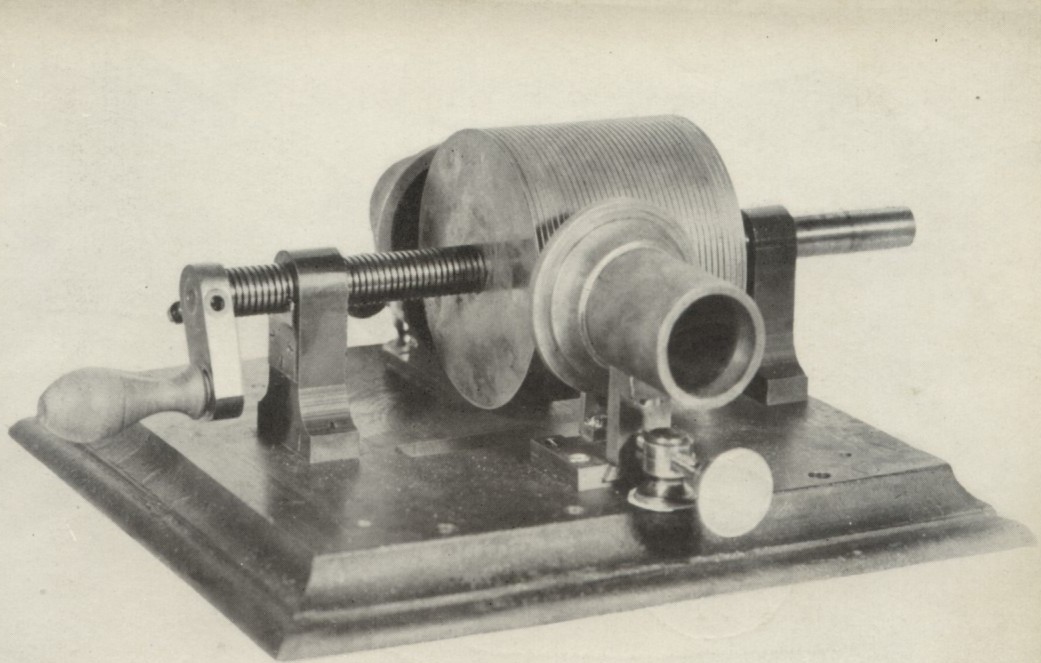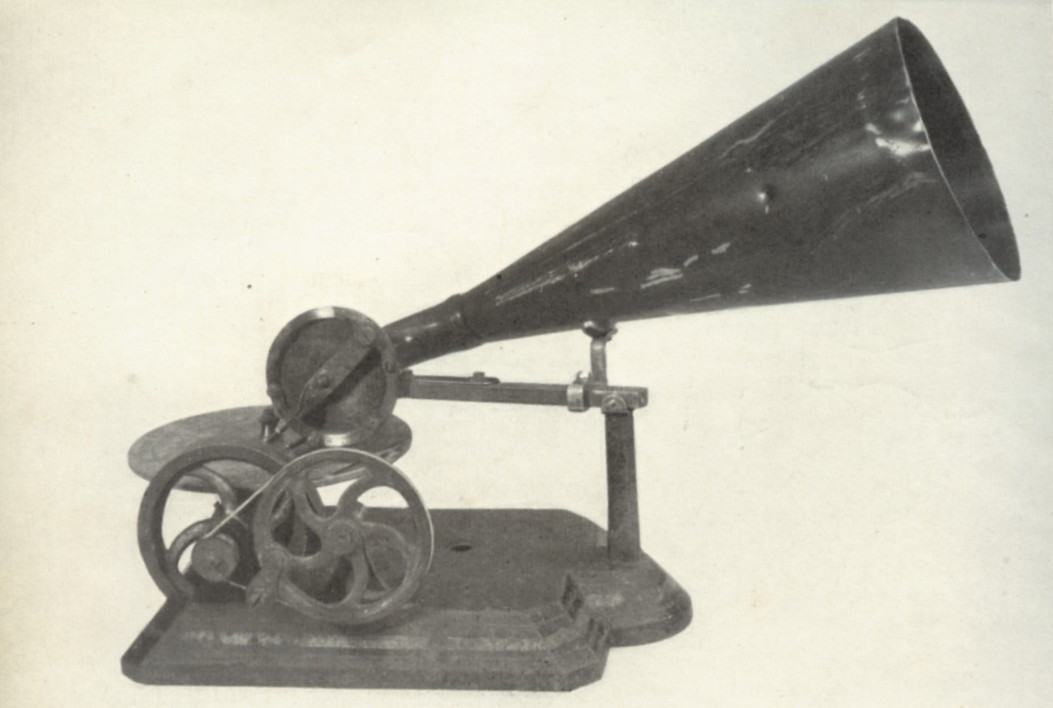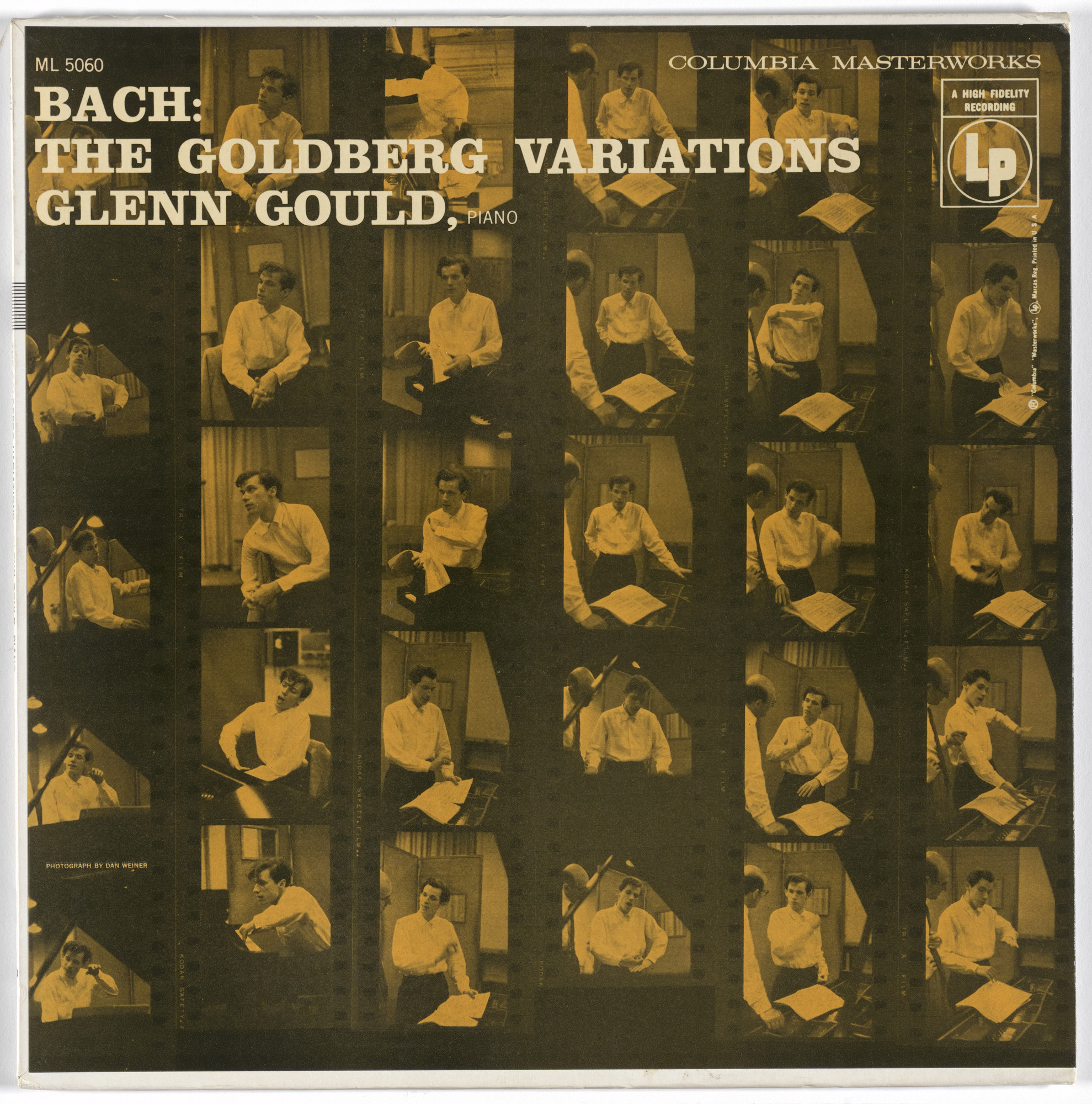LPs and Predecessors
Acoustic Recordings
Note: much of this section was paraphrased from here - please give their writeup a proper read.
The earliest sound recording device was invented by Édouard-Léon Scott de Martinville in the 1850s, which used a cone to pick up vibrations made by soundwaves and transcribed them. Scott intended for the sounds to be read rather than heard, but researchers have designed software that allows it to be played back.

The next development came with the invention of the phonograph by Thomas Edison in 1877. Edison used tinfoil and two needles, one for recording and one for playback.

This design was improved upon by inventors such as Alexander Graham Bell and Charles Tainter, who replaced the soft tinfoil drum with a hard-wax cylinder. Edison also made further improvements on their work.
A competitor was developed by Emil Berliner, which ended up as the far superior format in several ways. Developed between 1887 and 1893, Berliner’s gramophone was simpler to play back and had the potential for mass production. The recorder cut a groove into a disc, oscillating side to side to record the sound waves.

Berliner then further discovered that negative copies of these original discs could be easily made by electroplating them, which could then be used as stampers for identical copies to be produced from. The following development was to transfer this process to wax, allowing for better fidelity and finally the real viability of recording music.
Electric Recordings
The development of recording technology was slow in the decades following, and after the First World War radio began giving wax cylinders a serious run for their money. For one, the sound quality of the microphone and loudspeaker far superior to that of the gramophone.
Maxfield and Harrison from Bell Laboratories focused their research on a way to implement electrical recording: the resulting Western Electric recording system quickly rendered the old acoustic methods obsolete.
This system was leased out to record companies, with a royalty needing to be paid per record made and sold via the Western Electric method. Columbia Records developed an alternative which became known as the Blumlein system, which set the foundation for almost all the disc cutting technology today.
In 1948, Columbia introduced the Long Playing “microgroove” record format - shortened to LP. This would continue to be the recorded music standard for the next forty years, until the release of the Compact Disc.
For the next few decades, recordings would be made on tape (the technlogy for which was developed mostly in Germany during the 1940s) and then transferred to LP for distribution. Tape splicing was a revolutionary technique that allowed multiple recordings to be seamlessly merged together, allowing for performers to construct a perfect performance from many takes.
Packaging
12 inch LP’s - the most common form - come in a huge 30cm paperboard cover. These were originally plain from the time of the gramophone’s conception until 1938, when Columbia hired Alex Steinweiss as an art director. Steinweiss pioneered the idea of album covers and album art, with other record companies soon following suit, and all records produced thereafter would come with either reproductions of classic art or original designs. The backside of these huge covers also gave opportunity for a tracklisting, and more importantly liner notes. The liner notes for many classical recordings are a great way to quickly learn about the composition or piece, and often times contain fun anecdotes about the composer or performer.
There are many iconic cover designs from the LP era: here are a few of my favourites.


